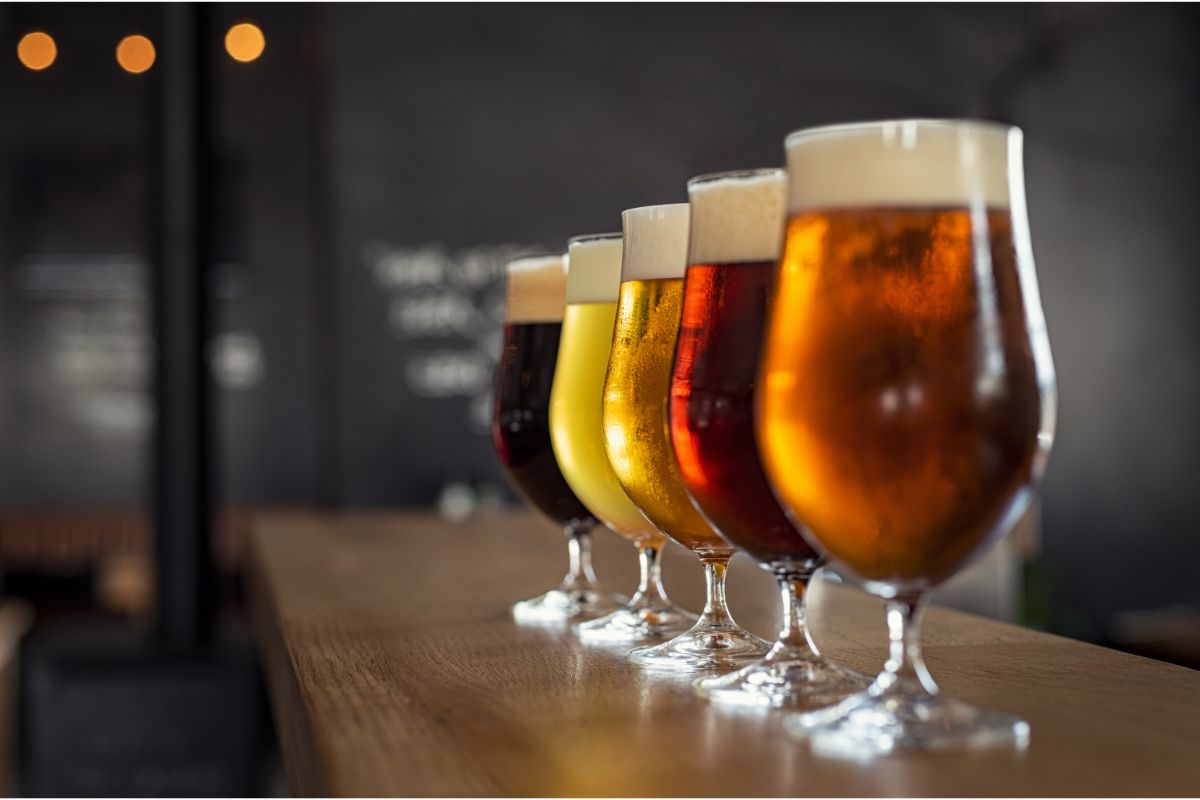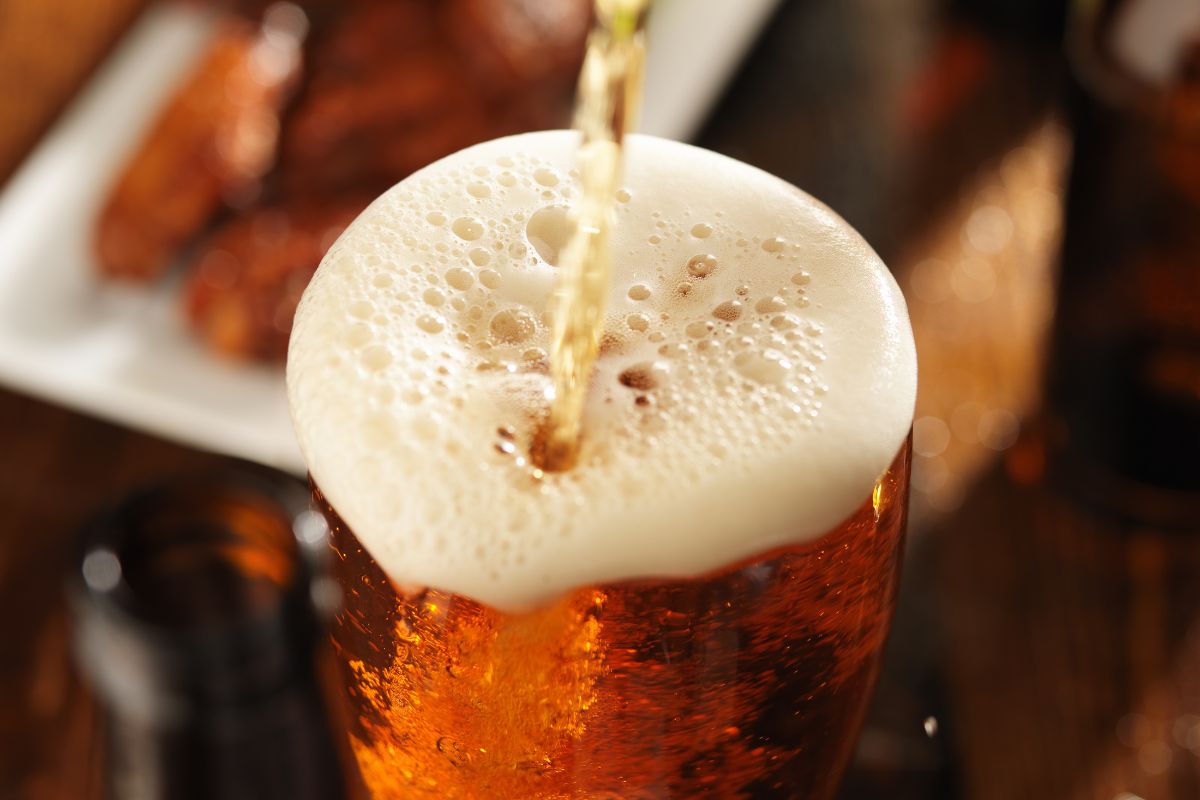Anyone here know what IBU is? We do!
In short, IBU stands for International Bitterness Units and it is a measure of the bitterness in beer, and it’s an important factor in the overall taste of your brew.

Whether you’re a seasoned craft beer drinker or just starting to explore the world of beer, understanding IBU can enhance your appreciation of different beer styles and help you find the perfect pint to suit your taste buds.
In this article, we’ll explore the science behind bitterness, the definition, and measurement of IBU, how it affects different beer styles, and debunk some common misconceptions.
So, sit back, crack open a cold one, and let’s dive deep into the IBU world!
IBU: The Science Behind Bitterness
Alright, let’s start with the basics: why do some beers taste bitter? The answer lies in the hops – one of the key ingredients in beer brewing.
Hops not only provide flavor and aroma to beer but also play a crucial role in balancing the sweetness of the malt with bitterness.
The bitterness in beer comes from alpha acids found in the hop plant’s resin. During the brewing process, alpha acids are isomerized or converted into iso-alpha acids through boiling.
The longer the hops are boiled, the more iso-alpha acids are formed, resulting in a higher IBU value and a more bitter beer.
But the bitterness isn’t the only flavor that hops contribute to beer as they can also add fruity, floral, spicy, or herbal notes, depending on the type and timing of the hop addition.
Why Is It Important To Understand IBU?
Understanding IBU is important because it gives us a standardized way to measure the bitterness in beer.
With the wide variety of beer styles available, IBU allows us to compare and contrast different beers and determine what styles we enjoy the most.
Additionally, IBU can help us find a beer that pairs well with certain foods. For example, a high IBU beer can complement the spiciness of a hot and spicy dish, while a low IBU beer can balance the sweetness of a dessert.
Moreover, knowing the IBU of a beer can also help brewers achieve the desired level of bitterness and balance in their recipes.
Indeed, they can adjust the hop additions and boil times to increase or decrease the IBU to create a beer that meets their specifications.
Understanding IBU
Ibu Explained
As we mentioned in the beginning, IBU stands for International Bitterness Units, and it’s a measure of the bitterness in beer.
It’s calculated by measuring the amount of iso-alpha acids in beer, which are formed during the brewing process when alpha acids in hops are isomerized.
How IBU Is Measured
To measure IBU, beer samples are tested with a spectrophotometer, which detects the presence of iso-alpha acids.
The result is then compared to a standard curve, and the IBU value is calculated. The IBU scale typically ranges from 0 to 100, with higher values indicating a more bitter beer.
However, it’s essential to note that IBU is not the only factor that affects the perceived bitterness in beer.
Other factors, such as the type and amount of malt used, the yeast strain, the brewing process, and the serving temperature, can all influence the perceived bitterness.
Furthermore, the same IBU value can taste different in different beer styles. For example, a beer with 30 IBU may taste very bitter in a light lager, but it may taste relatively mild in a heavily hopped IPA.
So, while IBU is an essential tool for measuring bitterness in beer, it’s important to consider other factors that can affect the overall taste and balance of the brew.

IBU In Different Beer Styles
IBU can vary widely among different beer styles, and understanding the typical IBU range for each style can help you choose a beer that suits your taste preferences.
For example, light lagers usually have a low IBU, ranging from 5 to 15, resulting in a beer that is crisp and refreshing with little bitterness.
On the other hand, IPAs typically have a higher IBU range, between 40 to 100 or more, resulting in a beer that is hoppy and bitter.
Other beer styles, such as stouts, porters, and brown ales, typically fall in the middle range of IBU, between 20 to 40, with a balance of malt sweetness and hop bitterness.
However, it’s important to note that the IBU range for each style is not set in stone, and there can be variations depending on the individual brewer’s recipe and interpretation of the style.
Misconceptions About IBU
Before we wrap this article up, we wanted to talk a bit about some misconceptions about IBU that are common in the beer world, as it’s essential to clear them up to fully appreciate the bitterness of your brew.
One common misconception is that a higher IBU means a more bitter beer. While IBU is an essential factor in bitterness, it’s not the only one.
Other factors, such as the type and amount of hops used, the brewing process, and the beer’s malt profile, can all affect the perceived bitterness of a beer.
Another misconception is that IBU is the same as hop flavor. While hops contribute to both bitterness and flavor in beer, IBU only measures the bitterness.
The flavor and aroma of hops are measured in other units, such as Hop Oil Content or Hop Aroma Units.
Therefore, while IBU is a critical tool for measuring the bitterness of beer, it’s not the only factor to consider, and understanding the factors that influence the perceived bitterness and hop flavor can help you appreciate the complexity and balance of different beer styles.
The Bottom Line
So, now that you know what IBU is, the next time you’re trying a new beer, check out the IBU range to get an idea of what to expect in terms of bitterness.
But remember, taste is subjective, and the best way to determine if you like a beer is to give it a try!
- StockHouseBrewing.com is being acquired by MomentumBrewHouse.com - October 24, 2023
- MomentumBrewHouse.com Acquires EmpiricalBrewery.com - August 31, 2023
- How Many Calories Are In A Bottle Of Beer? - May 24, 2023
